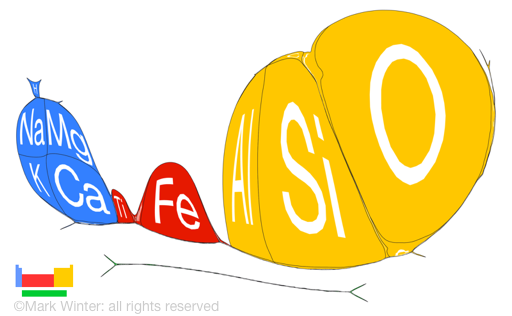Potassium - 19K: geological information
Potassium metal is far too reactive to be found uncombined in nature. The element is quite abundant and makes up about 1.5 % by weight of the earth's crust. Potassium is found extensively as potash (KOH). It is mined in Germany, USA, and elsewhere. Minerals such as sylvite (KCl), carnallite, and langbeinite, are found in ancient lake and sea beds. That as Saskatchewan in Canada contains about 10,000,000,000 tonnes of potassium chloride. Potassium is found in seawater, but in relatively small amounts compared to sodium.
Abundances of potassium in various environments
In this table of abundances, values are given in units of ppb (parts per billion; 1 billion = 109), both in terms of weight and in terms of numbers of atoms. Values for abundances are difficult to determine with certainty, so all values should be treated with some caution, especially so for the less common elements. Local concentrations of any element can vary from those given here an orders of magnitude or so and values in various literature sources for less common elements do seem to vary considerably.
| Location | ppb by weight | ppb by atoms |
|---|---|---|
| Universe | 3000 | 100 |
| Sun | 4000 | 100 |
| Meteorite (carbonaceous) | 710000 | 370000 |
| Crustal rocks | 15000000 | 7800000 |
| Sea water | 416000 | 65800 |
| Stream | 2300 | 59 |
| Human | 2000000 | 320000 |


The chart above shows the log of the abundance (on a parts per billion scale) of the elements by atom number in our sun. Notice the "sawtooth" effect where elements with even atomic numbers tend to be more strongly represented than those with odd atomic numbers. This shows up best using the "Bar chart" option on the chart.

